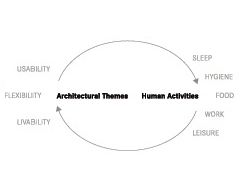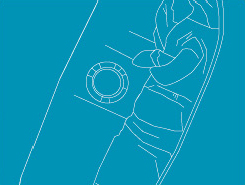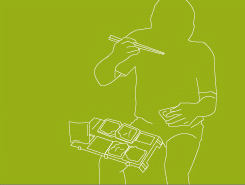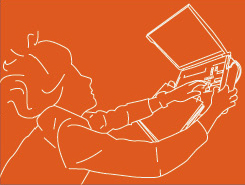Architecture for astronauts

Image credit: S. Haeuplik-Meusburger,
Architecture for Astronauts,
Springer Wien New York, 2011
Introduction
„The principal function of any habitat is to provide living and working environment for humans – as best as circumstances allow. Basic human requirements don’t change in different environments. A human must sleep, go to the toilet, eat and be active in some way …
Therefore a comparative analysis focusing on human activities within a built Environment was chosen as the method for this research.“ (Chapter 1.2 Research Methodology)
„An essential part of this research entailed finding and defining the architectural themes that describe and enable habitability in space. To make a consistent comparison, the methodology applies the same themes for every human activity in the analysis. … The comparison applies these themes: usability, livability, flexibility.“
Background
„Extra-terrestrial habitats are the „houses and vehicles“ where people live and work beyond Earth: non-planetary habitats such as a spacecraft or space station; and planetary Habitats such as a base or vehicle on the Moon or Mars. These building types are set up in Environments different from the one on Earth and can be characterized as ‚extreme environments‚. Multiple require ments arise for the architecture and design of such a habitat … “ (Chapter 2.1 Background)
„Today, on-board the International Space Station, people from different countries live and work together within a confined environment for several months. Aside from physical Survival and functionality of the technical infrastructure, the physiological, social and psychological issues emerge as equally critical for mission success.“ (Chapter 2.2 The Users)
„Man uses his arms and legs to complete a force coupe in zero-g much the same as he does on Earth. The major differences occur in how the man is restrained. On Earth, he has gravity holding his feet to the floor. In zero-g he must have restraints for that purpose.“ (Chapter 2.3 Consequences for Design; Ref. from NASA)

Image credit: S. Haeuplik-Meusburger,
Architecture for Astronauts,
Springer Wien New York, 2011

Image credit: S. Haeuplik-Meusburger,
Architecture for Astronauts,
Springer Wien New York, 2011
characteristics
The chapter ‚Characteristics of Extra- terrestrial Habitats‚ provides an overview on key characteristics of the Apollo Spacecraft and Lunar Module, the Space Shuttle Orbiter, and the Space Stations; Salyut, Skylab, Mir, as well as the International Space Station. (Chapter 3)
„We had straps, we walked away from the equipment bay, where it was stowed and we just walked away and used our own energy to unfold it and we turned around and it was sitting on the Moon.“ (Interview with Apollo Astronaut Harrison Schmitt; Chapter 3.2 Apollo Spacecraft)
„Salyut 7 was the most advanced and most comfortable space station of the Salyut series. A set of modifications to the interior made it more liveable. There were approximately 20 windows with shades on the Salyut 7.“ (Chapter 3.3 Salyut Space Station)
„To move around safely and to be held secu- rely in place, the OWS had walls and ceiling made of a metal triangular grid-work.“ (Chapter 3.4 Skylab Space Station)
„The airlock of the Shuttle can be used in a number of ways. It can be located inside or outside the crew module to provide access to the payload bay. A tunnel adapter can be used to connect the airlock to other modules …“ (Chapter 3.5 Space Shuttle)
„The Mir Space Station experiences built the basis for future space missions. Different Docking techniques and resupply methods were evaluated, which helped lead to truly international cooperation on Mir and later on ISS.“ (Chapter 3.6 Mir Space Station)
„The interior layout of the U.S., Japanese and European modules is modularized at the rack level and is reconfigurable …“ (Chapter 3.7 ISS Space Station)
Sleep
The human activity category ‚Sleep‚ includes the subactivities rest; preparation for sleep, relaxation, sleep as well as associated translation paths and stowage areas. Sleep concepts applied within the selected habitats range from sleeping bags, to hammocks and boxes to private crew quarters. (Chapter 4 Sleep)
„And if you think, you are in a box, you feel like you are in a box underground … but if you close your eyes and just feel the weightlessness, you can think you are in an enormous volume … you can imagine you are in a big room. It’s ok. It’s comfortable.“ (Interview with astronaut Jean-Francois Clervoy; Chapter 4.4 Sleep Shuttle)
„Jean-Pierre Haigneré (2009) slept in the module Priroda, which he shared with Sergei Awdejew. For him it was a discreet place and he could look at Earth from ‚one of the nicest windows‚. Reinhold Ewald slept in the module Kristall. It was one of the more radiation protected modules of Mir, because of the technological heavy equipment on the walls. Ewald had his sleeping bag loosely fixed to ropes running through the station … “ (Chapter 4.7 Summary Observation Sleep)

Image credit: S. Haeuplik-Meusburger,
Architecture for Astronauts,
Springer Wien New York, 2011

Image credit: S. Haeuplik-Meusburger,
Architecture for Astronauts,
Springer Wien New York, 2011
hygiene
The category ‚Hygiene‚ was divided into three sub-categories. 1. Personal Hygiene (full and part body cleansing and change clothes), 2. Toilet (collect, store and process waste) and 3. Housekeeping (cleaning and maintaining a certain hygiene standard in the station. (Chapter 5 Hygiene, p. 131)
„The ventilators were on all the time, there were a lot of filters, for different smells, but the technical smell of the space station always stayed.“ (Interview with Dumitru-Dorin Prunariu; Chapter 5.2 Hygiene Salyut)
„The walls are full of things. You don’t see the texture of the wall.“ (Interview with Michel Ange Tognini; Chapter 5.5 Hygiene Mir)
„Interesting is, that Skylab astronauts complained about inadequate lighting and wrong placement in the WMC. They could not read while using the faecal collector …“ (Chapter 5.7 Hygiene Summary Observation)
Food
Sub-activities associated with ‚Food‚ include preparing, growing, and consuming food and drinks, collecting, storing and processing waste; as well as associated translation through the space habitat and stowage. Food systems for outer space habitats have changed to a high degree over the last 40 years. (Chapter 6 Food)
„Midday one eats while working. The desig- nated one hour break, intended so that one could eat in peace, in reality didn’t exist on our flight.“ (Interview with Gerhard Thiele; Chapter 6.4 Food Shuttle)
„Food was just taking medicine, it was un- interesting … we did have fresh food or a Special meal, wine for three people. It was nice to make the life easier, more fun.“ (Interview with Jean-Pierre Haigneré; Chapter 6.5 Food Mir)
„Today a variety of food is available for astronauts, but still available food can get boring if you are on a long-term mission. According to Shayler et al. (2005), already Salyut cosmonauts were ‚cooking‘ on-board, leading to a ‚renewed pleasure‚. To increase the variety of tastes astronauts are inventive in creating new meals …
(Chapter 6.7 Summary Observation Food)

Image credit: S. Haeuplik-Meusburger,
Architecture for Astronauts,
Springer Wien New York, 2011

Image credit: S. Haeuplik-Meusburger,
Architecture for Astronauts,
Springer Wien New York, 2011
Work
The category ‚Work‚ includes the sub-activities operation, work task, conducting Experiments and communication; education and training. (Chapter 7 Work)
„We were busy as explorers … You try to take advantage of the time you have.“ (Interview with Apollo Astronaut Harrison Schmitt; Chapter 7.1 Work Apollo)
„In reality storage [requirements] change over time … and that is a critical issues.“ (Interview with Astronaut H.W. Schlegel; Chapter 7.4 Work Shuttle)
„In a micro-gravity environment, objects are not easy to find because they don’t fall down like they would on Earth. In his diary, Lebe- dev describes a technique of how he found lost things. The cosmonauts would release a balloon, to see where it would float and then would search at the place where the balloon went … Skylab astronaut Jack Lousma stated, that ‚things seem to just disappear very easy‚ … (Chapter 7.7 Summary Observation)
leisure
The category ‚Leisure‚ includes the sub- activities associated with exercise and free-time activities. (Chapter 8 Leisure, p. 264)
„We had a vacuum cleaner with back exhaust air, sold in Eastern European stores under the Name ‚Raketa‚, that looked like a rocket … you just took the vacuum cleaner bet- ween the legs, turned it on and then flew like a rocket inside the station.” (Interview with Dimitru-Dorin Prunariu; Chapter 8.2 Leisure Salyut)
„Every module had windows and there were plenty of possibilities to look out. So it worked, according to the position of the station, one could take an adequate window.” (Interview with Franz Viehböck; Chapter 8.5 Leisure Mir)
„Nobody would question having a window in a house on Earth. In space it’s different; the integration of windows has been a delicate topic …“ (Chapter 8.7 Summary Observation Leisure)

Image credit: S. Haeuplik-Meusburger,
Architecture for Astronauts,
Springer Wien New York, 2011
Author
Sandra Häuplik-Meusburger is an architect with a research focus on Habitability in extreme environment. She is Senior Lecturer at the Institute for Architecture and Design, department Hochbau 2 at TU Vienna and her architecture firm, space-craft, is located in Vienna, Austria. She is also the academic director of the Science Academy in lower Austria. Sandra holds a PHD in Architecture from the Technical University Munich. She is a member of the Space Architecture Technical Committee (SATC) of the American Institute of Aeronautics and Astronautics, and has worked and collaborated on several aerospace design projects.
For more information visit: space-craft Architektur